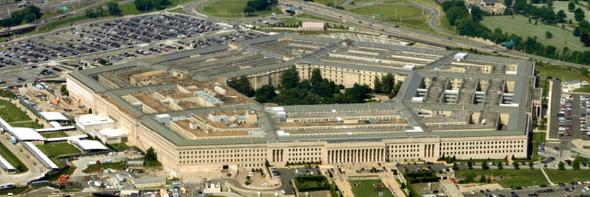
Claim: The Pentagon military office building was originally intended to be a hospital.
Example: [Collected via e-mail, August 2010]
One thing I heard about the Pentagon was that the building was originally planned to be the National Veterans Hospital,
prior to World
Isn't it true that the Pentagon was originally intended to be used as a hospital, and therefore the extra bathrooms? Also, the ramps between floors were intended for wheelchair use?
I heard years ago that the Pentagon originally was going to be a hospital (mostly hallways and ramps for gurneys, etc). Is this true?
Origins: A common type of architectural legend attempts to explain the design of buildings with features that are unusual or seemingly unsuited to their function by maintaining that such structures were originally constructed with other purposes in mind (or at least with the intent that they could easily be converted from one use to another). One of the more common examples of this legend type holds that Disney's sprawling Burbank studio
be easily adaptable for use as a hospital in case the company ran into severe financial troubles and couldn't pay off its costs.
A similar legend attaches to the large five-sided Department of Defense office building in Arlington, Virginia, commonly known as the Pentagon. A number of its features — including its proximity to Arlington National Cemetery, abundance of restrooms, its wide hallways, and use of ramps for access between floors (rather than stairs or
As we detailed in a separate article, the Pentagon's plenitude of restrooms stemmed from an initial requirement that the builders make allowance for racial segregation laws in effect in Virginia at the time. And as Steve Vogel, author of The Pentagon: A History, stated in response to an inquiry about this legend, the other seemingly hospital-like features of the Pentagon came about for reasons of pure practicality:
That's actually a myth — and a quite common one. The ramps actually were used to save on the steel that staircases and elevators would have required, and that was needed for weapons and battleships [during World
As Vogel also noted, the Pentagon-as-hospital rumor was actually a retroactive one which arose from speculation that, once World
Other suggestions were more serious. A Maryland congressman proposed that the Pentagon be converted into the world's largest
The belief was still common in many quarters that, once the war ended, the War Department would have no possible need for a building so large. There had been no shortage of suggestions, most of them sardonic, of what to do with the place. The Pentagon could shelter a second bonus army; the government could rent out space to all the generals who wanted to write their memoirs; six-day bicycle races could be staged in the building's outer ring. Life magazine reported, tongue in cheek, that the Pentagon might host peace talks after the war because it was "the only building in the world large enough to hold all the factions that will have a
Last updated: 10 July 2014
Sources: |
Vogel, Steve. "Books: 'The Pentagon: A History.'" The Washington Post. 13 June 2007. Vogel, Steve. The Pentagon: A History. New York: Random House, 2007. ISBN 1-400-06303-5 (pp. 330-331).
